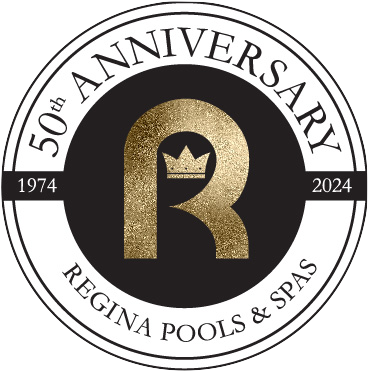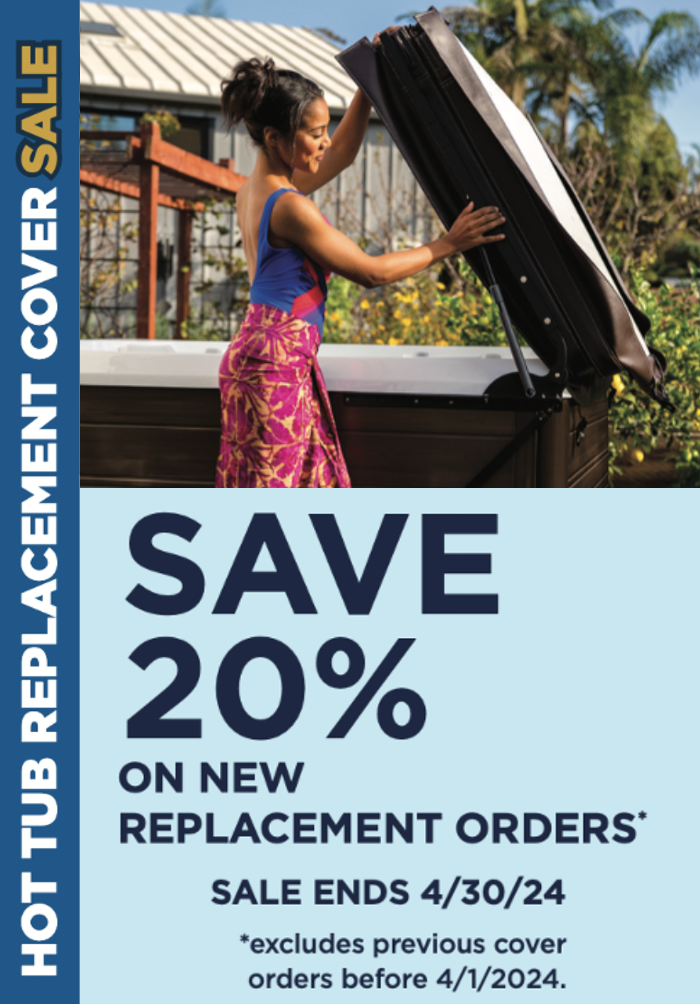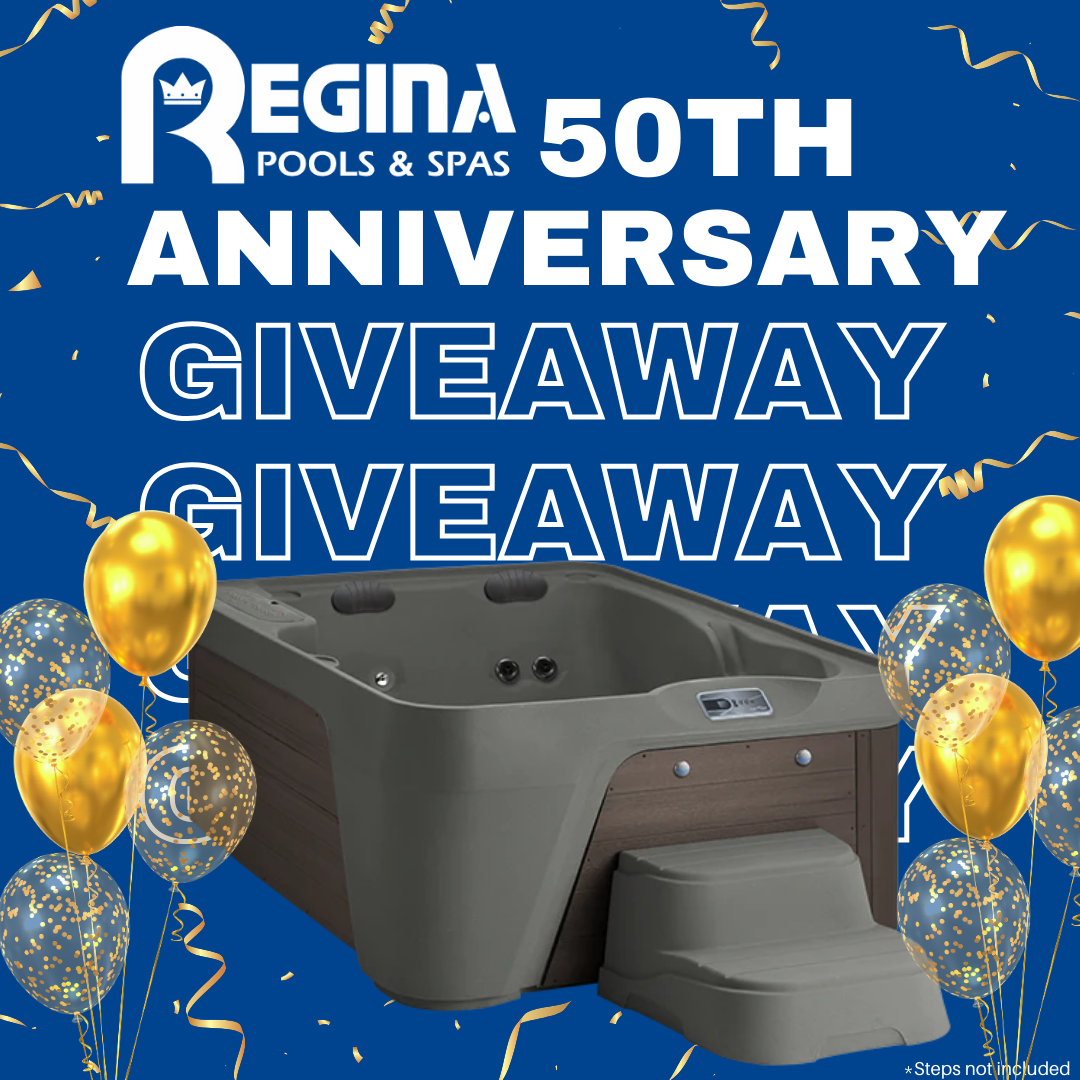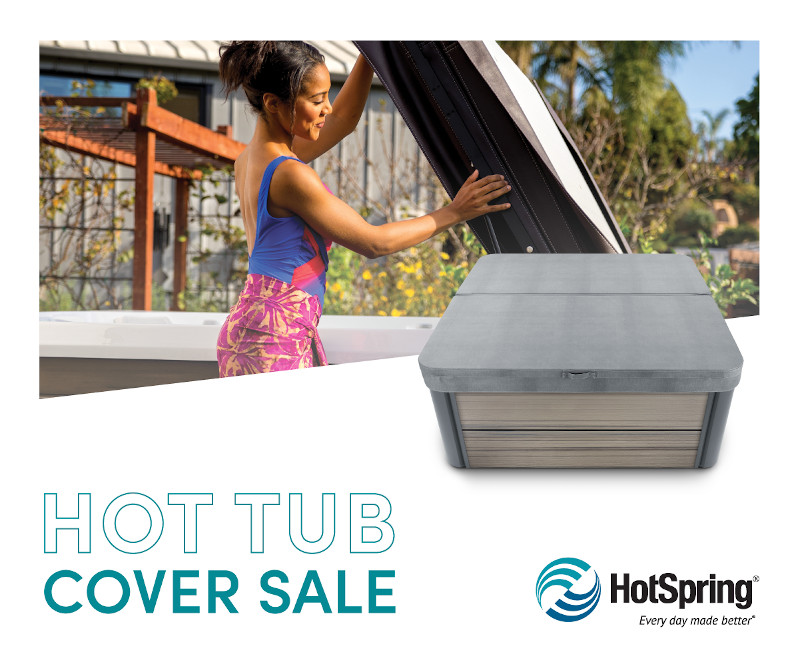Regina Pools & Spas
Common Pool/Spa Terms
Acid – Product used to lower pH and total alkalinity. Comes in wet (muriatic acid for pools) and dry (BioGuard Lo ‘n Slo or SpaGuard pH Decreaser) forms.
Algae – Aquatic plants that can grow in pools.
Algaecide – Product used to prevent or control algae. Examples: BioGuard Algae All 60, Back Up, Banish
Bacteria – Microscopic organisms, some of which are harmful to bathers.
Balanced Water – The proper ratio of TDS, Alkalinity, pH, Calcium Hardness, Stabilizer, Oxidizer and Sanitizer that prevents pool water from being corrosive or scale-forming.
Biguanide – An alternative sanitizer to chlorine and bromine, this system uses a supplemental oxidizer (normally hydrogen peroxide) and a PHMB-suitable (quat-based) algaecide. It is incompatable with chlorine, bromine, ozone, ionization systems and copper sulfate algaecides.
Bromine – A halogen element alternatively used as a sanitizer for pools and hot tubs.
Calcium Hardness – The amount of dissolved calcium in water. The ideal range for Vinyl Lined pools, painted, and fiberglass pools is 175-225 ppm., the ideal range for plaster pools is 200-275ppm, and the ideal range for spas is 100-200 ppm.
Chlorine – A halogen element, compounds of which are widely used in pool water sanitation.
Chlorinator – A device for pools that dispenses chlorinating compounds into pool water in a controlled, gradual manner.
Chlorine Demand – The amount of chlorine addition required before a free chlorine residual can be maintained.
Chlorine Generator – On site device for pools that converts salt (sodium chloride) into free chlorine (hypochlorous acid) through the process of electrolysis.
Chlorine Residual – The amount of chlorine left to kill new bacteria entering the pool or spa. Also, the amount of chlorine left after chlorine demand has been satisfied.
Combined Chlorine (chloramines) – Irritating compounds formed by the combination of nitrogenous compounds and free chlorine. Nitrogenous compounds are introduced into the water by urine, perspiration, cosmetics, suntan oils, etc.
Diatemaceous Earth (DE) – Filter media used to coat the grids or fingers in a DE pool filter, can remove by filtration particles as small as 3-5 microns in size.
Double Shock – Twice the normal amount of shock you would regularly add to your pool or spa. Example: I add 2 lbs. of Chlorine to my pool once a week regularly. To double shock I would add 4 lbs / I add 2 Tbsp. of chlorine to my spa once a week, to double shock I would add 4 Tbsp.
Filter – Diatemeceoous Earth (DE), Sand or Cartridge filters remove both visible and most microscopic matter from pool water. Hot tubs use Reemay cartridge filters.
Free (available) Chlorine – Chlorine in a form capable of bacteria and algae destruction. Preferred range: 1.0 to 3.0 ppm.
Ideal Range – Range in which your pool or spa chemistry should remain to make your pool or spa is balanced: Alkalinity Ideal range for pools – 125-150 ppm (80-150 ppm in salt water pools); pH – 7.4-7.6; Calcium Hardness – 175-225ppm (200-275ppm for plaster pools). Alkalinity Ideal range for spas – 80-125 ppm.; pH – 7.4-7.6; Calcium – 100-200 ppm.
Oxidize – Adding an oxidizing compound to the pool or spa water to chemically break up (oxidize) contaminants such as suntan oils, cosmetics, perspiration and chloramines.
Parts per Million (ppm) – Measurement for chemical concentration.
pH – The measure of acid activity in the water. Our body’s natural pH level is around 7.5, so ideal pH of water is between 7.4 and 7.6
Phosphates – An inorganic chemical that algae feed on. High phosphate levels can lead to algae outbreaks and low chlorine levels in pools.
Pump– Pool pump circulates pool water making it harder for bacteria and algae to take hold, as well as making filtration possible. Circulate for a minimum of 10-12 hours a day. Most HotSpring Spas contain circulation pumps that run 24 hours a day, and a jet pump to push water through the jets.
Reagent – Tablets, powder or liquid material used to test water.
Residual – The amount of sanitizer left in the water after a shock treatment. An estimated 90% of chlorine is used to oxidize pool water, while the remaining 10% remains as a residual to sanitize the pool water.
Scale – Calcium deposits that can build up on pool walls and equipment. Proper water balance prevents scaling.
Sanitizer – Chemical used to keep water free from infection- and disease- causing microbes like bacteria, viruses and yeasts.
Saturation Index (SI) – A value based on water temperature, total alkalinity, calcium hardness and pH. The value predicts the tendency of pool water to be corrosive, neutral or scale-forming.
Shock Treatment – Adding an oxidizing compound to the pool water to chemically break up (oxidize) contaminants such as suntan oils, cosmetics, perspiration and chloramines.
Soda Ash – Chemical used to raise pH and alkalinity.
Stabilized Chlorine Products – Chlorine products used to sanitize pool water that contain stabilizer.
Stabilizer – Cyanuric acid; a compound that prevents the dissipation of chlorine residuals by sunlight. Use BioGuard Stabilizer 100 to increase Stabilizer level.
Superchlorination – Adding enough chlorine product to reach a level of 10 ppm.
Total Dissolved Solids – (TDS) the total dissolved solids (chemicals, oils, organics) in your water. This number will be much higher for pool or spa owners using a salt system.
Total Alkalinity – The measure of the ability of the water to resist changes in pH. The ideal range for alkalinity is 125-150 ppm for pools and 80-125 ppm for spas.







